The Endorfy Fortis 5 Dual Fan CPU Cooler Review: Towering Value
by E. Fylladitakis on August 27, 2024 8:00 AM EST- Posted in
- Cases/Cooling/PSUs
- Cooler
- CPU cooler
- Endorfy
Testing Results, Maximum Fan Speed
To begin with, we are having a look at the Endorfy Fortis 5 Dual Fan with its fans running at their maximum speed.


| Core Temperature, Constant Thermal Load (Max Fan Speed) |
The Endorfy Fortis 5 Dual Fan demonstrates solid thermal performance with an average thermal resistance of 0.1277 °C/W when its fans are running at maximum speed (1400 RPM). What is of particular importance here is that the thermal resistance hardly varies depending on the load, even when the load is extreme, suggesting that the cooler has a very efficient heat transfer design. It falls behind dual tower coolers mainly because its heat transfer area is significantly smaller, and it is also important to consider that the Fortis 5 operates with slightly slower fans that strive for a balance between performance and noise.
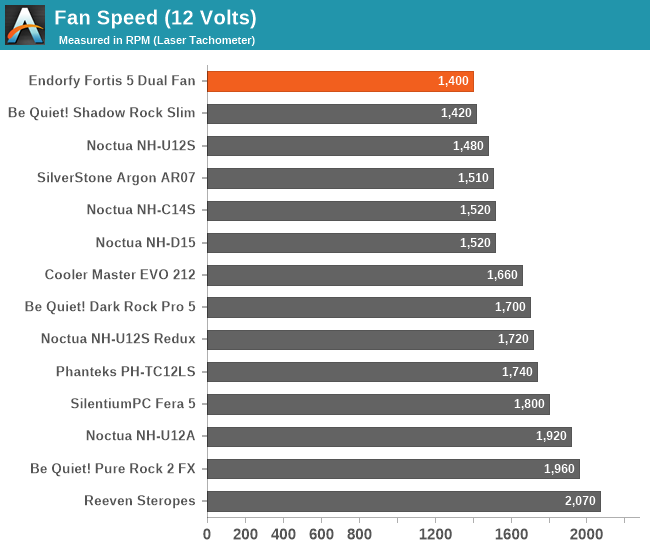
The Fluctus fans are specifically engineered to maintain low noise levels even during peak operation, or at least that is what the company claims. At full speed, the Fortis 5 generates a noise level of 37.7 dB(A), a figure lower than some other models reach with just one fan. While it definitely is not entirely silent, this noise level is impressively low for a dual-fan cooler.
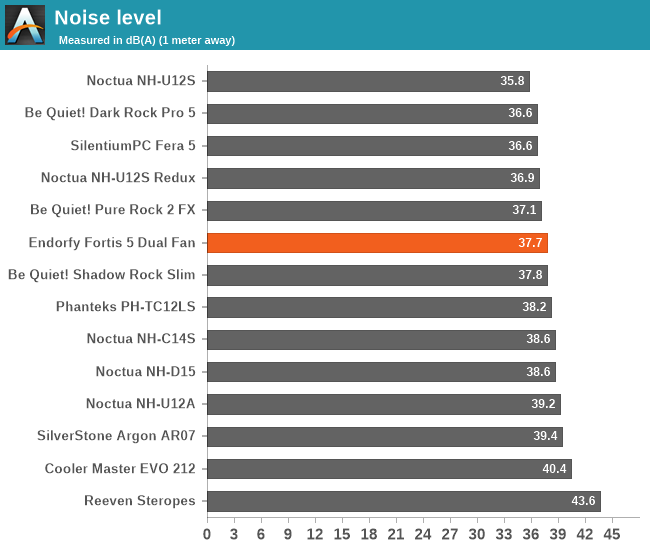
Testing Results, Low Fan Speed
In this test we are switching things up a bit, taking a look at the cooler’s performance with the Fluctus fans taken down to half speed.
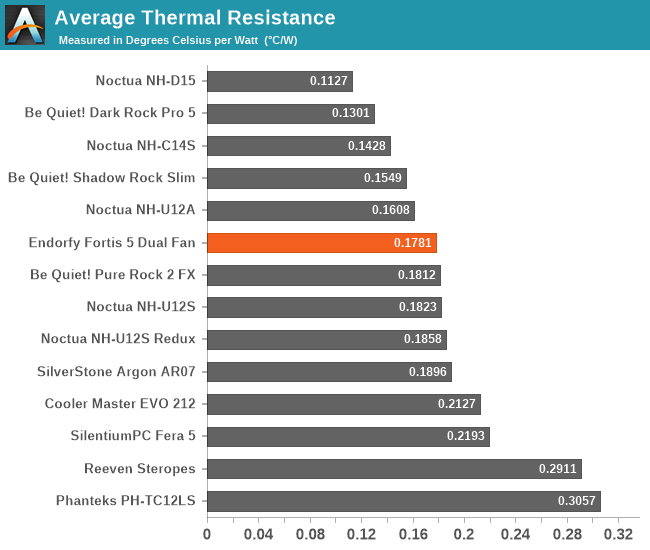

| Core Temperature, Constant Thermal Load (Low Fan Speed) |
When the fans speed of the Endorfy Fortis 5 is reduced to about 700 RPM, a decrease in thermal performance is observed, as expected. The average thermal resistance at this lower speed rises to 0.1781 °C/W. The performance loss is notable but the Fortis 5 Dual Fan still performs very well, placing it ahead of many competitive products.
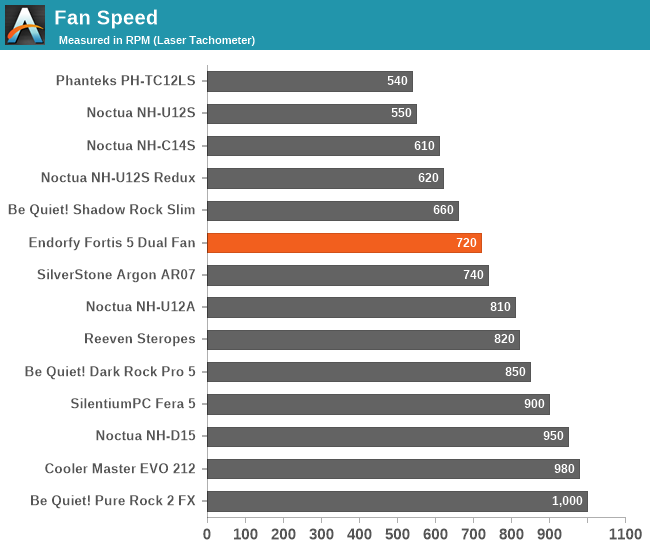
Lowering the speed of the Fluctus PWM fans to half results in a significant reduction in noise output, bringing it down to 32 dB(A). At this level, the cooler becomes practically inaudible, even with the observer almost next to the cooler itself. In most realistic scenarios, it would be difficult to distinguish the noise generated by the Fortis 5, even in a silent room, while the cooler is still capable of handling very powerful thermal loads.

Thermal Resistance VS Sound Pressure Level
During our thermal resistance vs. sound pressure level test, we maintain a steady 100W thermal load and assess the overall performance of the coolers by taking multiple temperature and sound pressure level readings within the operating range of the stock cooling fans. The result is a graph that depicts the absolute thermal resistance of the cooler in comparison to the noise generated. For both the sound pressure level and absolute thermal resistance readings, lower figures are better.
This chart helps us realize where the Fortis 5 Dual Fan stands against its direct competition and, truth is, the Endorfy cooler is doing significantly better than we expected it to. Due to its very low noise output, the Fortis 5 Dual fan can handle low-to-medium loads very well, much better than its smaller sibling (Fera 5) and as well as significantly more expensive options. When the fan speed goes up, the Fortis 5 Dual Fan even gives the NH-U12A a run for its money. Overall, the Fortis 5 does very well for a mainstream-level cooler of reasonable weight and cost.


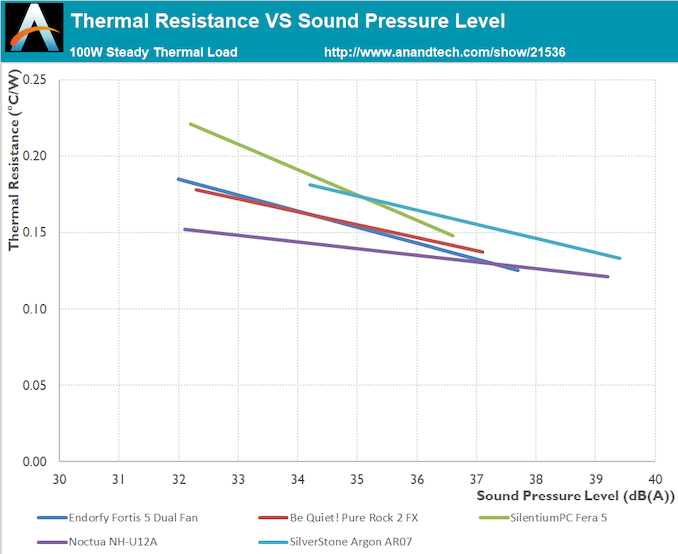








2 Comments
View All Comments
meacupla - Tuesday, August 27, 2024 - link
If they copied noctua's NH-U14S mounting mechanism, they could have saved a lot of fin area down the middle.PeachNCream - Thursday, August 29, 2024 - link
From SilentiumPC to Endorfy. At least they consistently demonstrate the people responsible for naming the company are drunk when they get their "best ideas" about what to call themselves. The week isn't over yet, but I imagine they'll win the title of dumbest business entity name regardless.